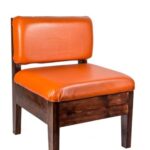Are you tired of dealing with slow internet and dead zones in your home? If so, you’re not alone. In today’s digital age, a strong and reliable wifi connection is essential for work, entertainment, and staying connected. In this article, we’ll explore the various factors that impact wifi strength and provide tips on how to improve home wifi strength.
When it comes to home wifi, a strong signal is crucial for seamless browsing, streaming, and online communication. Factors such as router placement, interference, and obstructions can all impact the strength and coverage of your wifi network. Understanding these factors is key to optimizing your home’s wifi setup for better performance.
One of the first steps to improving your home wifi strength is assessing your current signal strength and coverage. By understanding where the weak spots are in your home, you can take targeted steps to improve the overall performance of your wifi network.
From optimizing router placement to utilizing signal boosters and repeaters, there are various strategies that can help boost your home wifi strength. So let’s dive into the important topic of improving home wifi strength and learn how to enhance our digital connectivity at home.
Understanding the Factors That Impact Wifi Strength
Frequency Interference
One of the major factors that impact wifi strength is frequency interference. This occurs when the signal from your router competes with other devices or networks operating on the same frequency. Common culprits include Bluetooth devices, cordless phones, microwave ovens, and even neighboring wifi networks.
All of these can cause signal degradation and slower speeds. To combat this issue, it’s important to choose a wifi channel that has less interference and ensure that your router is set to automatically switch between channels to avoid congestion.
Physical Obstructions
Another factor to consider is physical obstructions within your home that can weaken your wifi signal. Thick walls, large metal objects, and other obstacles can block or reflect the signal, leading to dead zones in certain areas of your home. To address this, consider relocating your router to a central location in your home or using wifi extenders to improve coverage in hard-to-reach areas.
Router Limitations
The type and quality of your router also play a crucial role in determining wifi strength. Older routers or those with outdated technology may not be able to provide sufficient coverage for larger homes or support multiple devices simultaneously. Upgrading to a more powerful router with better range and speed capabilities can significantly improve the strength and reliability of your home wifi network.
Assessing Current Wifi Signal Strength and Coverage
When it comes to improving home wifi strength, a crucial first step is to assess the current wifi signal strength and coverage in your home. Understanding the areas with weak signal and poor coverage can help you take targeted steps to address the issues and enhance your wifi experience. To effectively assess your current wifi signal strength and coverage, consider the following steps:
- Conduct a speed test: Use online tools or mobile apps to measure your current wifi speed in different areas of your home. This will help you identify areas with slow or poor connectivity.
- Map out coverage: Walk around your home with a device connected to your wifi network and create a map of areas with strong and weak signals. Note any dead zones or areas with poor coverage.
- Check for interference: Identify potential sources of interference such as thick walls, large appliances, or other electronic devices that may disrupt your wifi signal.
Once you have assessed your current wifi signal strength and coverage, you can then proceed to take targeted actions to optimize and improve it. Whether it’s adjusting router placement, upgrading to a more powerful router, or utilizing wifi boosters and repeaters, understanding the state of your current wifi network is essential for making informed decisions on how to enhance its performance.
Tips for Optimizing Router Placement for Better Coverage
Understanding the Impact of Router Placement
The placement of your router plays a crucial role in determining the strength and coverage of your home wifi. Ideally, you should position your router in a central location within your home to ensure that the wifi signal can reach all areas efficiently. Avoid placing the router near large obstructions such as walls or furniture, as these can block or weaken the signal.
Elevating Your Router for Better Coverage
Elevating your router to a higher position can significantly improve its coverage. Placing the router on a shelf or mounting it on the wall can help reduce obstructions and interference, allowing for a stronger and more reliable connection throughout your home. Additionally, positioning the antennas of your router in different directions can also help distribute the signal more evenly.
Minimizing Interference With Proper Placement
Avoid placing your router near electronic devices such as cordless phones, microwaves, or Bluetooth devices, as these can cause interference and negatively impact wifi strength. Similarly, positioning your router away from other wifi networks in close proximity can help reduce interference and improve overall coverage. By strategically optimizing the placement of your router, you can ensure better wifi strength and connectivity throughout your home.
Upgrading to a More Powerful Router or Wifi Extender
When considering an upgrade to a more powerful router or wifi extender, it is important to take into account the size of your home and the number of devices that will be connected to the network. A powerful router with higher throughput and better range can provide a faster and more stable connection, especially in larger homes or areas with multiple obstructions.
Alternatively, a wifi extender can help amplify the existing wifi signal, extending its reach to areas where the signal may be weaker.
It is also crucial to research and compare different router models or wifi extenders to determine which option best suits your specific needs. Look for routers with features such as dual-band or tri-band capability, beamforming technology, and multiple antennas for improved performance.
Additionally, consider factors such as ease of installation, compatibility with your existing network setup, and any additional security features offered by the router or extender. By upgrading to a more powerful router or wifi extender that aligns with your requirements, you can effectively boost the strength and coverage of your home wifi network.
Utilizing Wifi Signal Boosters and Repeaters
Wifi signal boosters and repeaters are devices that can help amplify and extend the reach of your home wifi network. These devices work by receiving the existing wifi signal, amplifying it, and then transmitting the boosted signal to areas where the original signal may be weak or non-existent. This can be particularly useful in larger homes or spaces with multiple floors where the wifi signal may struggle to reach all areas.
When considering a wifi signal booster or repeater, it’s important to choose a device that is compatible with your existing router and network. Some routers may have specific requirements for compatible boosters or repeaters, so be sure to check your router’s specifications before making a purchase. Additionally, consider factors such as the range and strength of the booster or repeater, as well as any additional features such as dual-band capabilities for improved performance.
One popular option for extending wifi coverage is through the use of mesh wifi systems, which utilize multiple access points placed throughout a home to create a seamless and comprehensive network. These systems often include built-in signal boosting capabilities and can be an effective solution for improving coverage in larger homes or spaces with many obstructions. In addition to standalone boosters and repeaters, mesh systems provide a more integrated approach to improving home wifi strength.
| Factors to Consider | Key Points |
|---|---|
| Compatibility | Check compatibility with existing router |
| Range and Strength | Consider the range and strength of the booster/repeater |
| Mesh Wifi Systems | Consider using mesh systems for comprehensive coverage |
Tips for Reducing Interference and Obstructions
When it comes to improving home wifi strength, reducing interference and obstructions can play a crucial role in ensuring a stable and reliable connection. One common source of interference is other electronic devices such as cordless phones, baby monitors, microwave ovens, and even neighboring wifi networks. To minimize interference from these devices, consider upgrading to a dual-band or tri-band router that operates on different frequencies.
In addition to electronic devices, physical obstructions such as walls, floors, and large furniture can also block or weaken wifi signals. To address this issue, it’s important to strategically place your router in a central location within your home to maximize coverage. Additionally, consider using wifi signal boosters or repeaters to extend the reach of your network into areas with poor connectivity.
Lastly, be mindful of potential sources of electromagnetic interference in your home such as metal objects and electrical wiring. These factors can also impact the strength of your wifi signal. Ensuring that your router is positioned away from these sources and implementing shielding strategies can help reduce electromagnetic interference and improve overall signal strength.
| Interference Sources | Obstruction Solutions |
|---|---|
| Electronic Devices (microwaves, cordless phones) | Upgrade to dual-band or tri-band router for frequency diversity |
| Physical Obstructions (walls, furniture) | Strategically place router and use signal boosters/repeaters |
| Electromagnetic Interference (metal objects, wiring) | Position router away from sources and implement shielding strategies |
Utilizing Mesh Wifi Systems for Comprehensive Coverage
When it comes to improving home wifi strength, one effective solution is utilizing mesh wifi systems for comprehensive coverage. Unlike traditional routers, mesh systems consist of multiple interlinked devices that work together to cover a larger area with strong and reliable wifi signals. These systems are particularly beneficial for larger homes or spaces with multiple floors, where a single router may struggle to provide consistent coverage.
One of the key advantages of mesh wifi systems is their ability to create a seamless network that allows devices to automatically connect to the nearest and strongest access point. This ensures consistent signal strength throughout the entire coverage area, eliminating dead zones and giving users the freedom to move around without experiencing drops in connection or slow speeds.
In addition to providing comprehensive coverage, mesh wifi systems often come with user-friendly mobile apps that allow for easy setup, monitoring, and management of the network. These apps typically offer features such as parental controls, guest network creation, and device prioritization, giving users greater control over their wifi experience. Overall, utilizing mesh wifi systems can be an effective way to ensure strong and reliable wifi coverage throughout your home.
Troubleshooting Common Wifi Issues and Solutions
Even with the best router and optimal placement, wifi issues can still arise in a household. Some of the most common problems include slow speeds, dropped connections, and dead zones within the home. One of the first steps to troubleshooting these issues is identifying the cause. This could be due to interference from other electronic devices, outdated equipment, or even the layout of your home.
One solution for addressing slow speeds and dead zones is to consider investing in a wifi extender or booster. These devices can help increase the range and strength of your wifi signal, especially in larger homes or those with multiple floors. They work by receiving the existing wifi signal, amplifying it, and then transmitting it to areas that may have had weak coverage before.
If interference from neighboring networks or household appliances is causing disruptions to your wifi signal, one solution is to change the channel that your router is using. Routers operate on different channels within the 2.4GHz and 5GHz bands, so switching to a less congested channel can help minimize interference. Many routers also have an automatic channel selection feature that can handle this task for you.
By understanding common wifi issues and their solutions, homeowners can take proactive measures to improve their home’s wifi strength and overall connectivity. Whether through investing in additional equipment like extenders or boosters, adjusting router settings, or addressing interfering factors head-on, there are plenty of ways to troubleshoot and enhance the performance of your home network.
Conclusion With a Summary of Key Takeaways for Improving Home Wifi Strength
In conclusion, having a strong home wifi signal is essential for ensuring a smooth and uninterrupted internet experience. By understanding the factors that impact wifi strength and taking proactive steps to optimize coverage and reduce interference, it is possible to significantly improve the overall performance of your home network.
Assessing your current wifi signal strength and coverage is the first step in identifying any weak spots or areas of interference. From there, optimizing router placement, upgrading to a more powerful router or using wifi extenders can help to improve coverage and signal strength throughout your home. In addition, utilizing mesh wifi systems can provide comprehensive coverage for larger homes or spaces with multiple floors.
Reducing interference and obstructions, such as electronic devices or physical barriers, is also crucial for improving home wifi strength. Finally, being familiar with common wifi issues and troubleshooting solutions can help you quickly address any connectivity problems that may arise. By implementing these strategies, you can enjoy a stronger and more reliable home wifi network for all of your internet needs.
Frequently Asked Questions
How Can I Make My WiFi Signal Stronger in My House?
There are several ways to make your WiFi signal stronger in your house. One option is to upgrade your router to a newer model that supports the latest WiFi standards.
You can also try repositioning your router to a more central location in your house and away from obstructions like walls or metal objects. Additionally, using WiFi extenders or mesh systems can help amplify and distribute the signal throughout your home.
Why Is My WiFi Signal So Weak in My House?
A weak WiFi signal in your house could be due to several factors. The distance between your device and the router, physical obstructions like walls and floors, interference from other electronic devices, or an outdated router could all contribute to a weak signal. Identifying the specific cause will help you find the best solution for improving your WiFi strength.
How Do I Fix Poor WiFi at Home?
To fix poor WiFi at home, start by troubleshooting the potential causes of the issue. Repositioning your router, upgrading to a newer model, minimizing interference from other devices, and using WiFi extenders are all practical solutions that can help improve your WiFi performance.
In some cases, you may need to consider upgrading your internet plan for faster speeds or contacting your internet service provider for additional support.

I’m thrilled to have you here as a part of the Remodeling Top community. This is where my journey as an architect and remodeling enthusiast intersects with your passion for transforming houses into dream homes.





